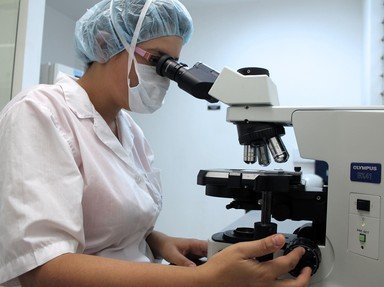Quiz Answer Key and Fun Facts
1. This organelle is found primarily in plant cells. It is located outside the membrane and provides protection to the cell. What is this organelle?
2. Plant and animal cells both contain membrane bound organelles. Which of the following is a term that would describe these cells?
3. This organelle is found mostly in animal cells. They are tubed shaped and located at right angles from one another. What organelle is this?
4. This organelle is found in both plant and animal cells. It provides energy to the cell and is where the aerobic processes of cellular respiration occur. What is this organelle?
5. This process occurs primarily in plant cells. Since plants are unable to obtain energy from other organisms, they must produce their own. Which process uses light and converts compounds into glucose to provide energy for plants?
6. This organelle is found in both plant and animal cells. Animal cells contain many small ones. Plant cells contain one large one that takes up most of the cell's volume. What is this organelle?
7. Lysosomes are found in both plant and animal cells. They are more abundant and easier to see in plant cells.
8. Plastids are organelles found only in plant and algae cells.
9. Cilia are mostly found in animal cells. They can be found in plant cells but are very rare.
10. The cytoskeleton is found only in animal cells giving animals extra protection.
Source: Author
Computer100
This quiz was reviewed by FunTrivia editor
WesleyCrusher before going online.
Any errors found in FunTrivia content are routinely corrected through our feedback system.

